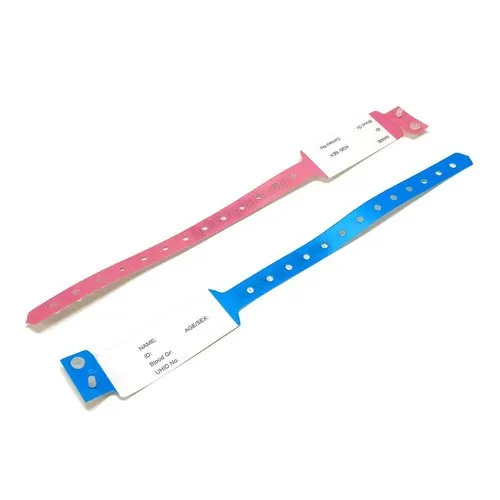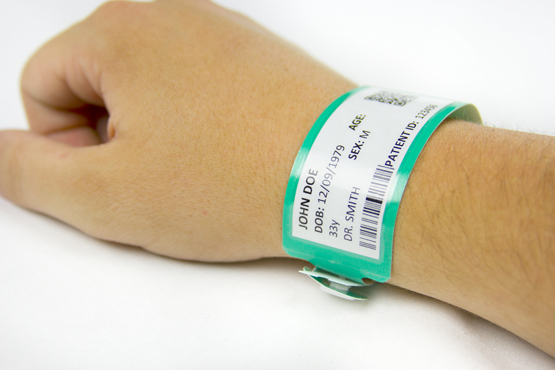The Development of the Patient Identification Band in Healthcare Facilities
The Development of the Patient Identification Band in Healthcare Facilities
Blog Article
Checking Out the Different Kinds Of Patient Identification Band Used in Medical Facilities
In the intricate world of healthcare, the vital duty of Patient Identification bands usually goes undetected. These bands, varying from simple paper wristbands to sophisticated RFID bands, form the backbone of Patient safety and security methods, guaranteeing precision in Patient Identification. Yet, the large diversity of these bands, each with its one-of-a-kind benefits and limitations, is often forgotten. As we browse with this topic, one might gain understanding into the refined complexities and crucial importance of such bands in clinical facilities.
Comprehending the Importance of Patient Identification Bands
While they may appear like plain accessories, Patient Identification bands play an essential function in clinical facilities. These bands function as a critical tool for verifying Patient identification, avoiding clinical mistakes related to misidentification. The bands normally display vital details such as the Patient's name, age, blood type, and any type of well-known allergic reactions. They allow health care specialists to quickly access this vital details, thereby helping with punctual and accurate clinical treatment. Patient Identification bands additionally help in improving administrative jobs, ensuring exact record-keeping and invoicing. In spite of their simplicity, these bands symbolize the concept of Patient security, a keystone of high quality health and wellness treatment. Without them, the danger of medical mistakes, and as a result, Patient injury, may dramatically enhance.
Conventional Paper Wristbands: Their Usage and Limitations
Traditional paper wristbands have actually been a staple in Patient Identification across numerous clinical facilities. While their usage is widespread, they harbor particular constraints that may influence their efficiency in Patient monitoring. This area will concentrate on the extent of their application and the intrinsic disadvantages related to their usage.
Paper Wristbands: Use Extent
In the world of Patient Identification, paper wristbands have actually long held a critical function. These bands are typically made use of in outpatient settings, where the Patient's remain is temporary. The wristbands consist of vital information such as the Patient's name, day of birth, and a special Identification number. This straightforward, yet efficient system, allows clinical professionals to promptly and precisely identify people, making certain the right treatment is carried out. Paper wristbands are likewise made use of in emergency situations, where quick Identification is critical. Their usage extends to events like blood contribution drives and mass inoculation programs, additionally emphasizing their versatility. Despite improvements in innovation, the simple paper wristband remains a affordable and reputable service for Patient Identification in numerous healthcare circumstances.
Limitations of Paper Wristbands
In spite of their widespread use, paper wristbands are not without their drawbacks. In enhancement, paper wristbands usually do not have the technological capacities of more modern choices, such as barcoding or RFID chips, restricting their capability to merely displaying created info. Paper wristbands can create discomfort or skin irritability to some individuals, especially when used for extensive periods.
Barcoded Wristbands: Advancements in Patient Identification
While Patient Identification has long been a crucial facet of healthcare, the development of barcoded wristbands signifies a substantial leap onward. These bands leverage the simpleness of barcoding innovation, allowing for Patient details to be rapidly checked and accessed. They improve the rate and accuracy of Patient Identification, lowering the threat of clinical mistakes associated with misidentification. Barcoded wristbands are economical, very easy to review create, and remove handwriting mistakes common with hands-on systems. Nonetheless, they are not without restrictions. While they use enhancements over traditional bands, the barcode can end up being used or smudged, providing it unreadable. In spite of this, barcoded wristbands remain a vital device in modern health care settings, representing the crossway of modern technology and Patient treatment.
Superhigh Frequency Identification (RFID) Bands: an Action Towards Futuristic Health Care
The development of Patient Identification bands has actually brought regarding the introduction of Superhigh frequency Identification (RFID) Bands (patient identification band). These ingenious gadgets existing crucial benefits for medical care centers, supplying an extra efficient and technologically advanced means of Patient Identification. The implementation of RFID in healthcare is a significant action towards a more advanced strategy to Patient monitoring and safety and security
Recognizing RFID Bands

RFID Bands: Secret Benefits
Mainly, these bands boost Patient security by providing precise, rapid Identification, thereby lowering medical mistakes. RFID bands can store like it a huge quantity of Patient information, including clinical history and allergic reactions, allowing personalized treatment. On the whole, RFID bands represent a substantial advancement in Patient Identification innovation, benefiting both individuals and healthcare carriers.
Applying RFID in Health Care
These bands provide a smooth method to track and recognize individuals, ensuring their security and improving performance in treatment procedures. RFID bands lower medical mistakes by offering exact Patient Identification, which is vital in avoiding misdiagnosis or incorrect medication management. Thus, the execution of RFID bands is a considerable action towards enhancing Patient security and healthcare shipment.

Color-Coded Wristbands: Helping in Quick and Accurate Diagnosis
In the bustling atmosphere of a clinical facility, color-coded wristbands have actually arised as important devices for swift and precise Identification of a client's clinical problem. These wristbands, put on by people, carry particular shades that match to different medical problems or statuses. This system is developed to use immediate visual hints to medical care carriers, enhancing Patient safety and security and care quality.
Techniques for Efficient Execution and Management of Patient ID Bands
Attaining optimum usage of Patient Identification bands requires a well-structured method for their execution and monitoring. Patient education is likewise critical; people should comprehend the objective of the bands and the demand for their constant wear. It's important to have a backup plan in place, such as barcode scanning or biometrics, to make sure that Patient Identification is never compromised.
Conclusion
Patient Identification bands are vital in clinical centers to make certain security and accuracy. Traditional paper, barcoded, RFID, and color-coded wristbands each hold special benefits, ranging from cost-effectiveness to advanced information storage and instant clinical signals. Effective application and administration of these bands can dramatically minimize medical errors, enhance efficiency, and enhance total Patient care. Thus, understanding and making use of these Identification devices is critical for keeping high standards in medical care.
These bands, varying from easy paper wristbands to innovative RFID bands, create the backbone of Patient security protocols, guaranteeing precision in Patient Identification.The advancement of Patient Identification bands has brought regarding the emergence of Radio Frequency Identification (RFID) Bands. Overall, RFID bands stand for a substantial advancement in Patient Identification modern technology, profiting both people and medical care suppliers.
RFID bands lower clinical mistakes by giving exact Patient Identification, which is important in protecting against misdiagnosis or incorrect medicine management. Patient education is likewise important; clients should comprehend the purpose of the bands and the need for their Check This Out constant wear.
Report this page